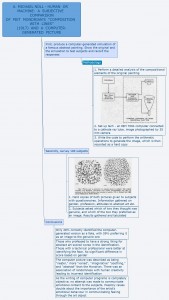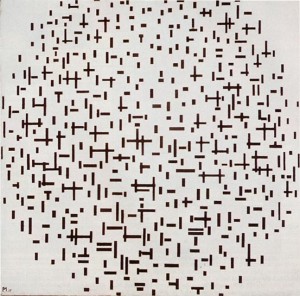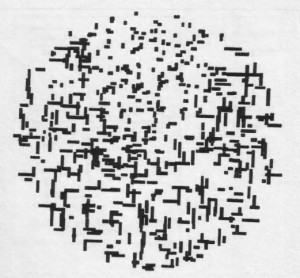A very informative talk by artist Conor McGarrigle, given in the Glucksman Gallery on 29/10/15, as part of their series of talks coinciding with the George Boole themed show “Boolean Expressions” currently running there. He used the talk to give an overview of his own practice, which incorporates considerable use of technology, the internet, databases and data collection systems. To give context to his own practice he gave quite a comprehensive overview of the history of artists’ use of similar tech in history, tracing a line extending from the 1960s to today. Some of the content was surprising to me, as some heavy hitters from that era, such as Robert Rauschenberg and Jasper Johns, artists previously well known to me as innovative painters and sculptors, conducted a lot of experimental work with what was then newly emerging tech.
Three main aspects of artists’ engagement with emerging technology were identified. These were; system – artists being able to incorporate existing technological systems into their work, communication – the first communication satellites were now in orbit, offering unprecedented scope for connectivity, and Utopia – the exciting prospect of a connected world, the breaking down of barriers between art and the sciences etc. The early days of this endeavour were marked by difficulty in artists and other creatives being able to access this tech, as it was new, owned by big corporations, and hugely expensive and intimidating. This was followed by a period from the early nineties on, where a far greater availability and accessibility to technology, largely afforded by the emergence of the internet, led to a far more independent, anarchic period of activity. However, McGarrigle sees in recent times something of a reversal of this trend as artists need more help in gathering and dealing with the huge volumes of data currently being generated.
A major player in this history was the electrical engineer Billy Kluver. From 1967, he was involved in Experiments in Art and Technology (E.A.T.) with the artists Robert Rauschenberg and Robert Whitman. This group was set up to initiate collaborative projects to allow artists and engineers to work together directly. This I found particularly fascinating, as though I was familiar with Rauschenberg’s work as a painter and installation artist I hadn’t realised he was involved in such cutting edge research at such an early point.



